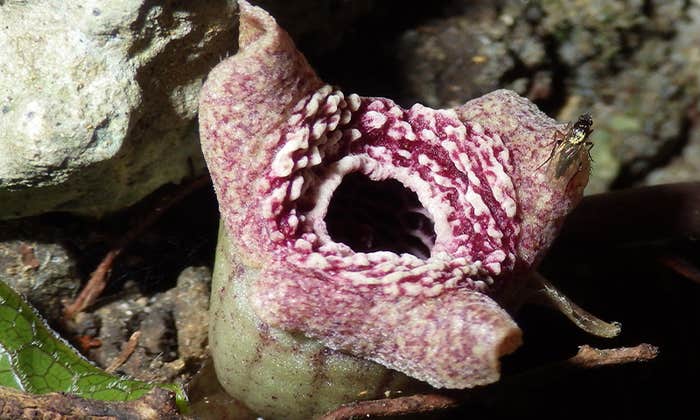
What if a wound of yours, a pierced ear, say, healed at a different rate depending on who was around you? A 2017 study explored this question, albeit with mice. Researchers paired mice together, punching holes in their ears, and tracked the rate of recovery. They found that the genome of a cagemate affected how fast their ears healed.
Benjamin Domingue, an assistant professor at the Stanford Graduate School of Education who studies sociogenomics, was fascinated by what the researchers called an “indirect” or “social” genetic effect. He wanted to see if similar things were going on in humans. Through the National Longitudinal Study of Adolescent to Adult Health, a sample of 15,000 Americans who were between 7th and 12th grade in 1994-95, and which is now on its fifth wave of data collection, Domingue and his colleagues were able to test for the influence of social genetic effects on educational attainment and relationships like friendship. Previous studies, for instance, have demonstrated that friends are more similar genetically than randomly paired individuals.
We caught up with Domingue to discuss the role social genetic effects play in such findings.
How do social genetic effects operate?
There are presumably some characteristics that we may or may not observe that are helping transmit the social genetic effect. Your heritable behaviors or psychological features may have influences on your friends. These have long been of interest in studies of peer effects. But these studies are hard to get right. However, genes may help us start to break down peer effects. Genes may offer, at least in some ways, a unique mechanism for studying the degree to which one individual affects another because we know you don’t “cause” your friend’s genes! That’s going to allow us to ask more fine-grain questions; in fact, people are already beginning to do so.
The genotypes of one’s social peers are strongly predictive of how far they go in school as well.
How do you define the social genome?
There’s a general answer and then a specific answer. The general answer is that it is the genotype of the social environment in which one finds themselves. In the mouse example, it’s the genome of your mice cage mates. We operationalize the idea of the social genome in a few ways using genome-wide data. Primarily we focus on polygenic scores which are derived from genome-wide association studies (GWAS) that scan the genome to identify effects of individual genetic variants on a specific outcome. GWAS have been done for pretty much every trait you can imagine. In particular, we use GWAS results for height, body mass index, and educational attainment.
How do you explain the genetic similarity among friends?
What is especially novel about our study is that we have some sense for social context. In particular, we see adolescents embedded in schools. Using this feature, we’re finding that social structure is certainly playing a large role. While it is true that friends are genetically similar, it’s also the case that schoolmates are genetically similar, and that the genetic similarity among schoolmates is close to genetic similarity among friends. Once you factor in the fact that friends are being selected from within school, a large part of the reason that we observe genetic similarity between friends seems to be that you’re just choosing from an already relatively homogeneous set of schoolmates.
Are you saying genetic effects independent of social structure don’t matter?
Well, it’s certainly the case that there’s room for active assortment to be driving some of the observed genetic similarities—friendships based on characteristics that are partially inheritable: athletic interest, academic interest, similar kinds of personality types. But, there’s a strong case to be made that a lot of the assortment seems to be due to just impersonal social forces. Schools are the example I’ve been studying, but neighborhoods in this country, for example, are highly segregated by both race and income level, and so we’re seeing how such social structures can lead to “birds of a feather” type findings without even considering individual choice.
Do social genetic effects have a role in educational attainment?
The individual genome is certainly predictive of how far one goes in school. This is something that has been replicated in numerous other studies. But what we also have is evidence that the genotypes of one’s social peers are strongly predictive of how far they go in school as well. For example, a new study shows the effect of the maternal genome that is not transmitted to offspring—very similar in spirit to our finding.
But, there’s a real difference here between, say, height and educational attainment, in terms of how the genetics are working—the genomes of your social peers don’t predict your height. Educational attainment, as I have been trained to think about it, is a strongly socially contextualized phenotype. It’s not that one should care so much about the fact that friends’ genes predict their own educational attainment. That’s interesting, but what this is really telling us is that educational attainment has some qualitatively unique features that we’re going to have to be sensitive to when we attempt to study the genetics of it. These qualitatively unique features really differentiate it from something like height that just does not have the same dependence on social context.
What are the implications of the social genome for educational and health outcomes?
These findings remind us that, in studies meant to examine the genetic architecture underlying certain traits, we may need to be sensitive to contextual features. For educational attainment, there’s a possibility for bias in the GWAS results because the GWAS does not control for the social genetic effects that we observed. We’re going to potentially overestimate the within-person influence of genes on educational attainment if we just study it as an individual process because we’re not accounting for the fact that all of these other things are also playing a role—we’re just chalking it up to genetics.
For health phenotypes, the water get a little murkier. We have a little suggestive evidence showing that body mass index is perhaps a little bit sensitive to the genetics of your school. It might be the case that the studies of certain kinds of health outcomes will also need to be sensitive to social context as well. But these results are much weaker; we’ll need bigger samples to say anything more definitive.
Does the importance of social structure hint that nurture influences human behavior more than nature?
I would not put it that way. They’re both crucially important processes in understanding human development. The spirit of this work very much allows for both nature and nurture to have influences, and those influences may be intertwined in complicated ways. We certainly are not trying to pick a winner in that fight. What I would say is that our study has to do with the difference between studies of the individual and studies of organizations and social structure, and the degree to which a complete story of human development may require simultaneous analysis of both.
Victor Gomes is an editorial intern at Nautilus.
WATCH: Why is genetics a destabilizing idea?































